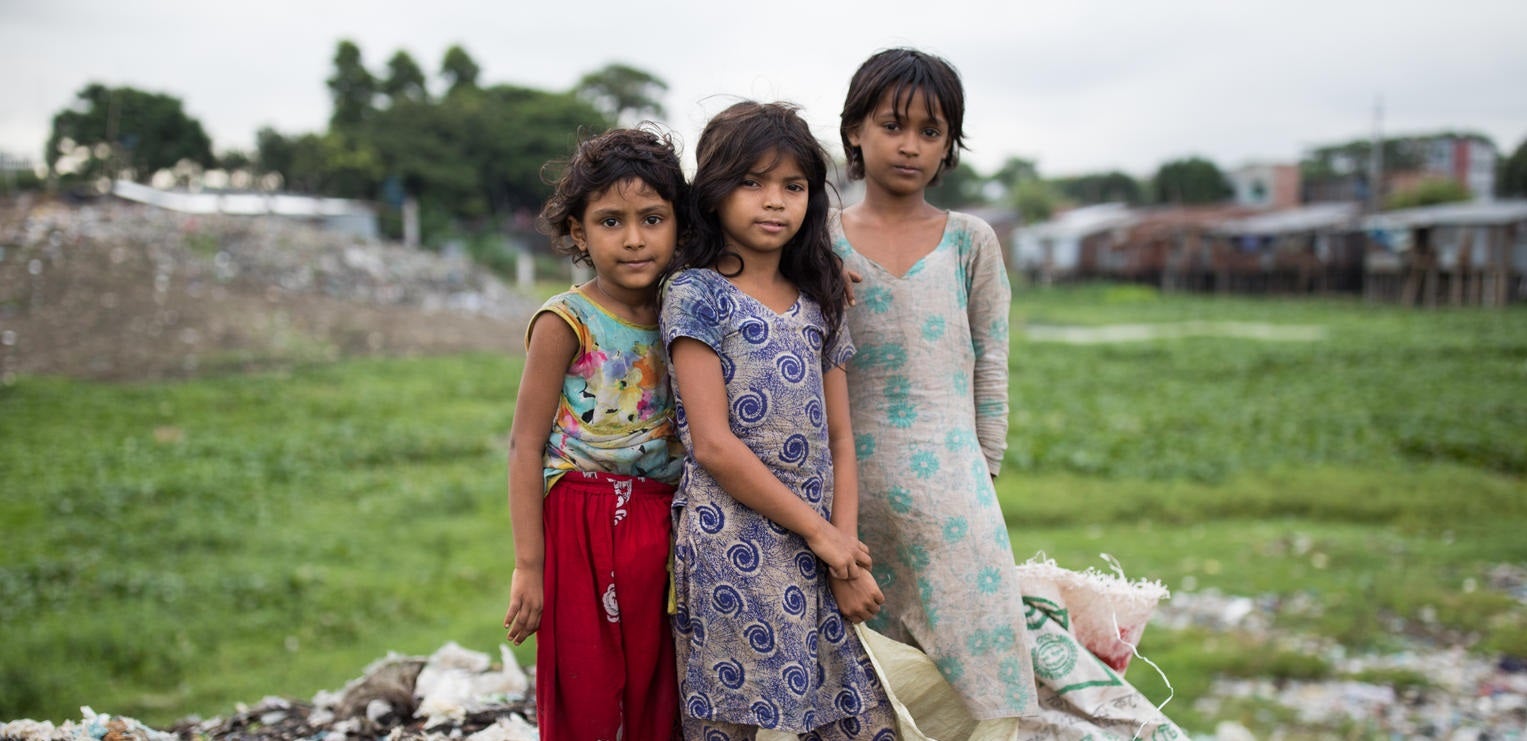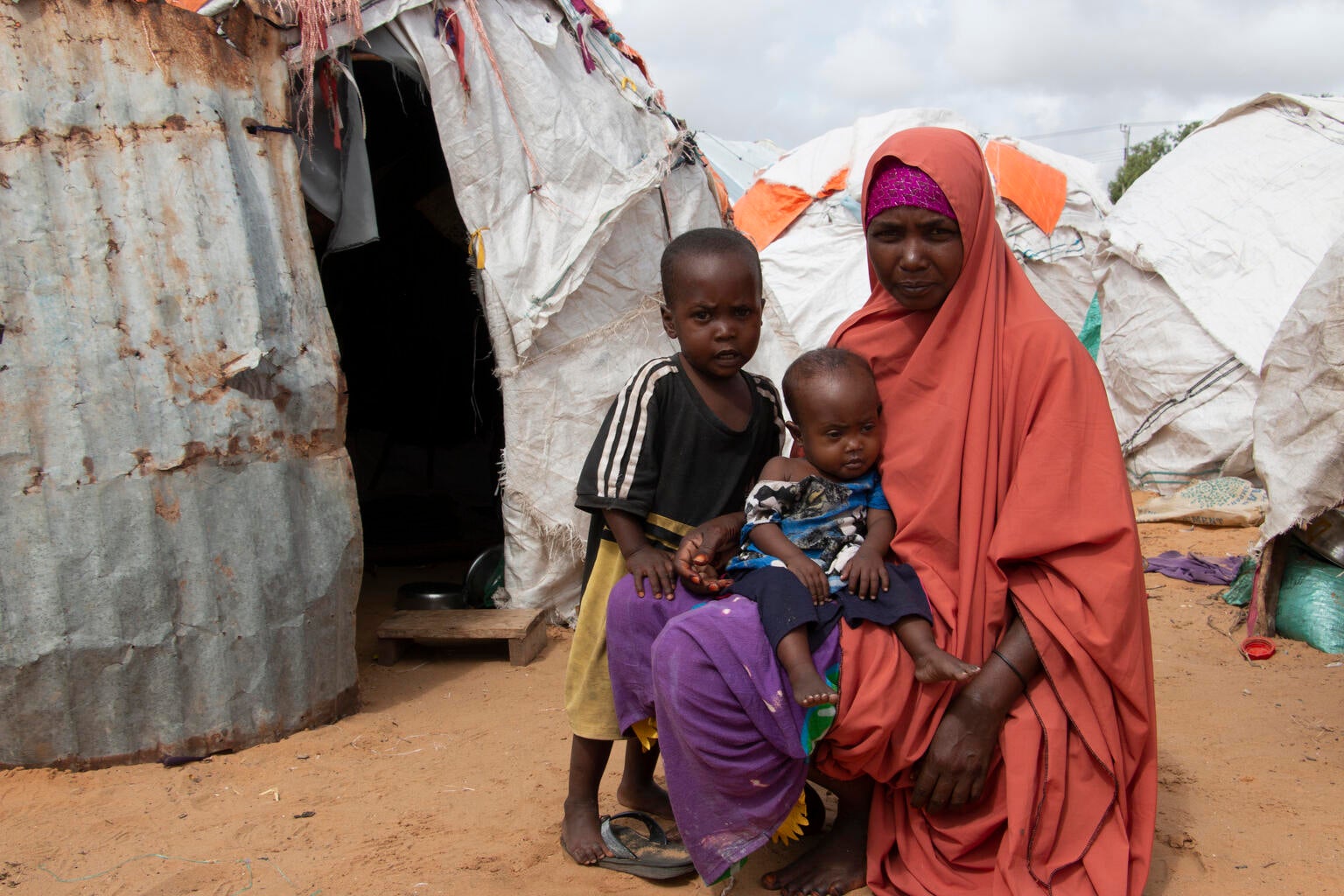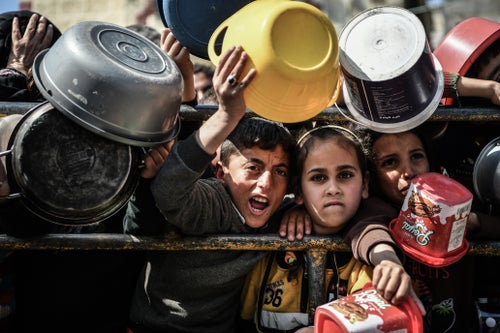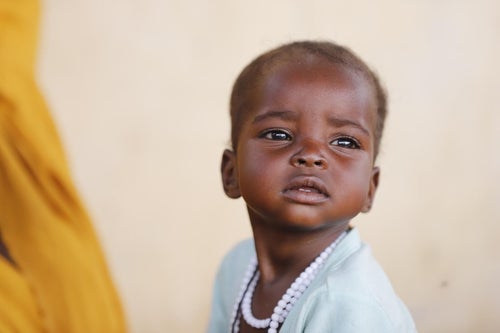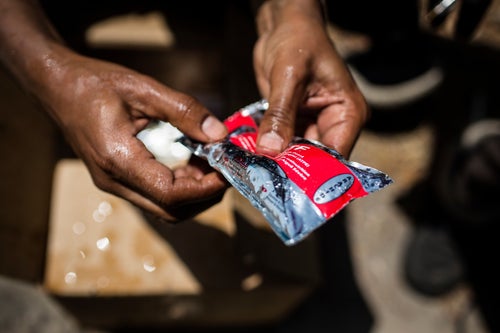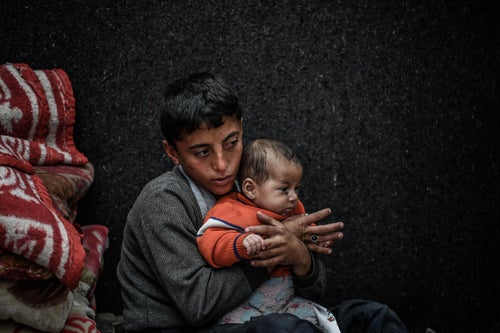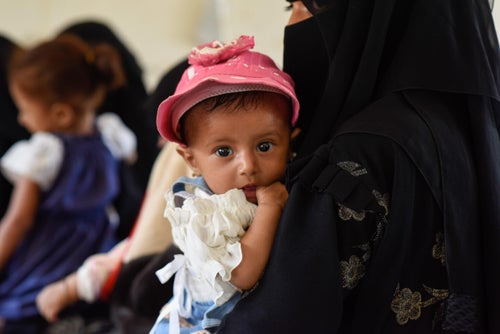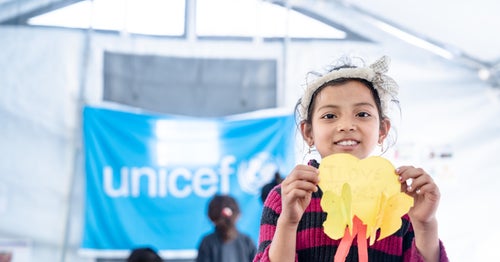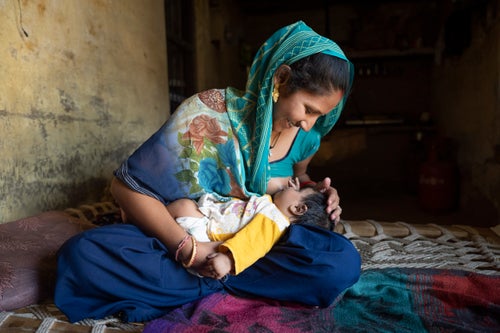Fatuma is a mother of 5 in Somalia. When drought after drought devastated her region, she watched helplessly as her way of feeding her family evaporated. Forced to flee her home to find food and safety, sadly one of her children died from severe malnutrition - his name was Salat, aged just 10 years old.
“He died the next day,” she says. “I cannot grieve for him because I have to find food for my other children.”
"There was nothing more I could do for Salat. He was already very sick on the journey here."
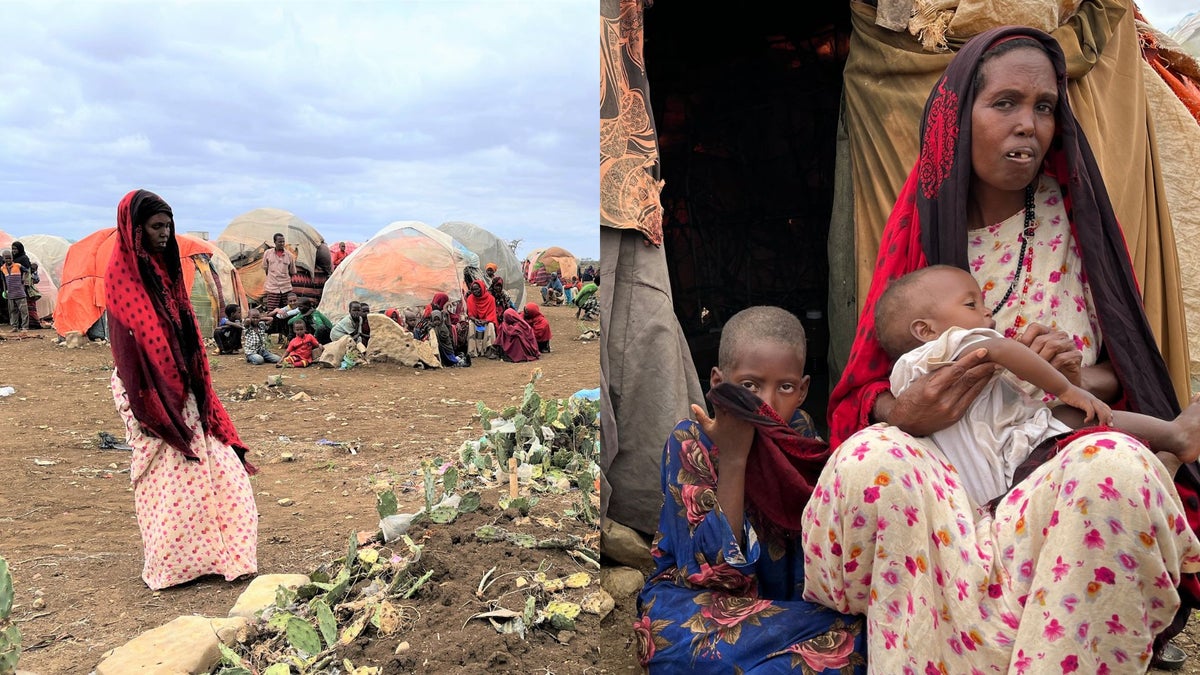
This is the reality of the situation
The children of Somalia have been living on a knifes edge for many years. Multiple failed rainy seasons have destroyed crops and livestock with 90 per cent of the country affected by extreme drought conditions. Millions of children have been displaced, as they are forced to leave their homes to find food, water and safety.
The situation has gotten so bad in Somalia that UNICEF fears that famine is imminent in some regions of the country.
What is famine?
Famine is when a significant percentage of the population of a country (or region) are unable to access adequate food, resulting in widespread severe acute malnutrition and loss of life by starvation and disease.
Famine is only declared when certain conditions are met. The United Nations uses a five-phase scale known as the Integrated Food Security Phase Classification (IPC) to assess a country’s food security situation. A famine classification is the highest on the IPC scale (Phase 5) and occurs when:
- At least 20 percent of the population face extreme food shortages.
- Acute malnutrition rates exceed 30 percent – meaning that people experience the most extreme and visible form of under nutrition.
- Two out of 10,000 people die from starvation daily.
Help is on the way
UNICEF has been on the ground in Somalia since 1972. For 50 years, the team on the ground have saved lives. Today is no different.
With soaring food prices and increased conflict, it is estimated that 6.7 million people will be acutely food secure by the end of 2022. If we don’t act now, 54.5 per cent of children in Somalia are expected to suffer from acute malnutrition by June 2023.
The numbers are dire, but with immediate and collective action, we can get life-saving therapeutic food into the hands of children who desperately need it.
Children like one-year-old Obsinale, who is recovering from malnutrition at a stabilisation centre in Somalia. Her and her twin sister's recovery was possible due to the urgent treatment they received at the centre.
What is therapeutic food?
Therapeutic food is used to treat severe acute malnutrition in young children. Six to eight weeks of treatment can be all it takes to save a child’s life. In times of famine, drought, or conflict, therapeutic food is a true lifesaver.
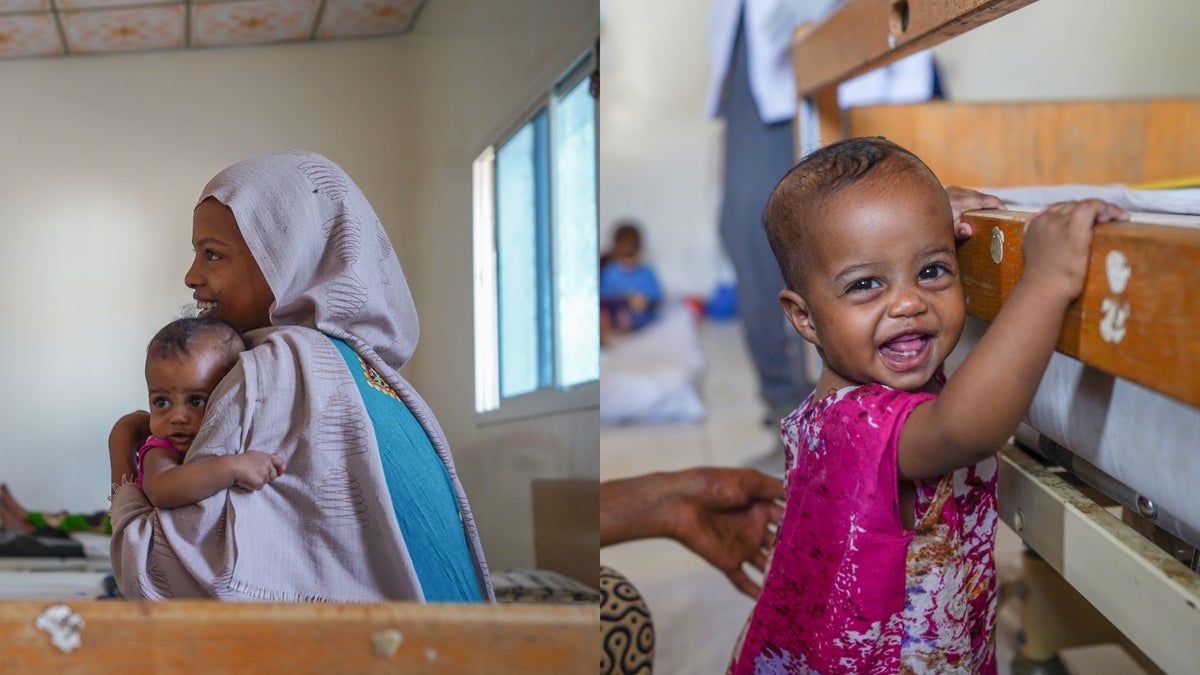
UNICEF is on the ground in Somalia supplying life-saving therapeutic food for thousands of children suffering from severe acute malnutrition. We will stay and fearlessly deliver until every child is safe.
Mobile health centres reach the hardest-to-reach
Bali Abaar is one of the hardest-to-reach locations served by UNICEF mobile clinics. Under the shade of an Acacia tree more than one hundred people wait to be seen. Mother of four, Fatuma, is one of the families who travelled for hours in search of food, water, and health care. She had to leave two children home with their grandmother.
"I migrated in search of emergency relief like food and water and arrived here where my two children who are malnourished are receiving support."
The nearest stabilisation centre is 60 kilometres away, and the beds there are currently full. Health care worker, Abdisalam, has been referring an increasing number of severely malnourished children and infants to the stabilization centre over the past 10 months so that they can receive emergency care.
Nura was sent to the centre with her daughter Nimo, who was very weak, had diarrhoea and was unable to open her eyes.
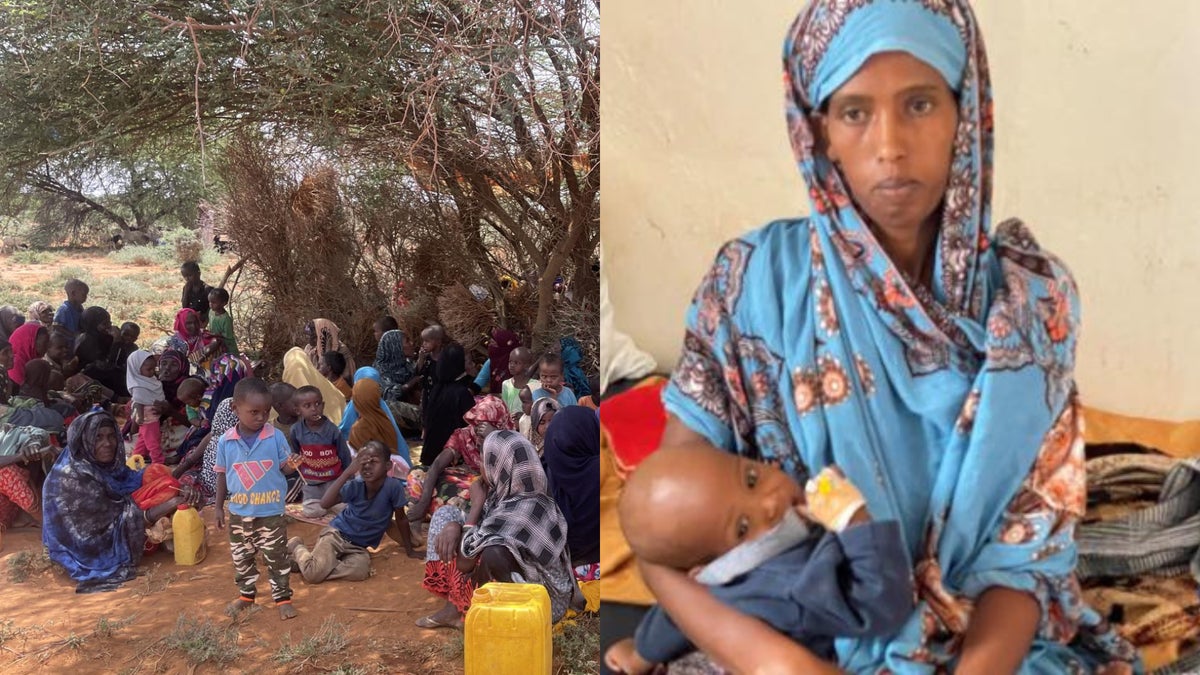
"I’m also malnourished and was unable to breastfeed her. The drought wiped out all our animals and we had nothing left for food."
Nimo was immediately put on fluids and given milk that managed to stop the diarrhoea. Her health has improved, and she can now sit up on her mother's lap.
As the crisis worsens, with your donations, UNICEF will be scaling up its support by working with the government, local authorities, and NGO partners to get life-saving aid to the children and families who need it most.
Related articles
Stay up-to-date on UNICEF's work in Australia and around the world


